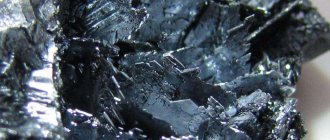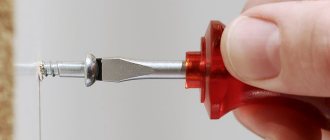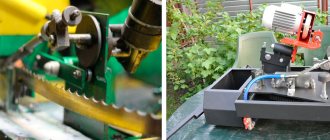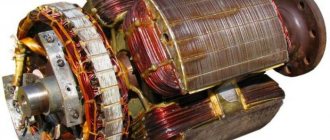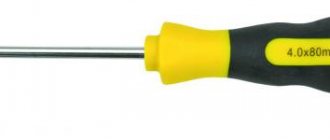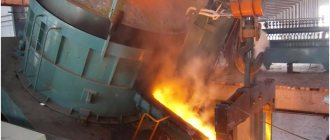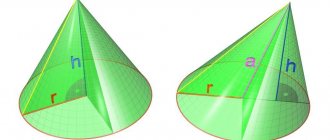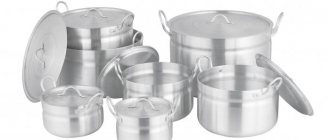In simple words, it is a colorless, odorless gas. It is obtained during oil refining. Since it is extremely fire hazardous, an odorant is added to the technical form. This way you can notice in time that a high concentration of the substance has accumulated in the room. The gas is slightly toxic, but inhalation of vapors negatively affects the human central nervous system. Easily liquefies at high pressure. That is why it is used as fuel. Gas is transported in cylinders or through gas pipelines. The most common form is a mixture of propane and butane.
What is propane-butane
During oil production and refining, these two gases are formed as a by-product. The mixture is liquefied, filled into cylinders and transported for further use.
The propane-butane mixture is sensitive to ambient temperature. Propane is more stable, and butane evaporates at a temperature of 0˚C. To make gas use safe, two seasonal fuel options have been created:
- summer - ratio 50:50 or 40:60;
- winter - 70:30 or 90:10.
Propane-butane is used for heating water and heating residential buildings, industrial buildings, and workshops in areas where there is no central gas pipeline or its supply is difficult.
Advantages of liquefied gas:
- low price and availability;
- rapid establishment of heating and hot water supply in remote areas;
- convenient transportation.
Regioselectivity
Starting with propane, secondary carbon atoms appear in the composition of alkane molecules, and with butane, which has two isomers (n-butane and isobutane), tertiary atoms appear, respectively, associated with two and three other carbon atoms. The rate of halogenation varies between atoms and increases in the order “primary → secondary → tertiary.” This phenomenon is called regional directionality of halogenation, or regioselectivity. Quaternary atoms do not participate in radical substitution reactions.
Selectivity depends on the following factors:
- Reagent activity. The more active the halogen, the weaker the selectivity when replacing hydrogen. Thus, when an alkane reacts with chlorine, regioselectivity is much less than in reactions with bromine, or is not observed.
- Temperature. Heating leads to a decrease in selectivity.
This is interesting:
General formula of cycloalkanes
Hexane isomers
Chlorination and bromination of propane
In the reaction of propane with chlorine at low temperatures, the selective direction is weakly expressed. Although the radicals produced during the reaction are less energetic and therefore more stable, free chlorine atoms are extremely reactive and attack both secondary and primary atoms, especially at high temperatures.
When heated, chlorine radicals attack primary atoms even more actively, since less energy is spent breaking their bond with hydrogen.
When propane is brominated, regioselectivity due to the lower activity of bromine reaches high values:
Bromination proceeds similarly to the reaction involving the simplest alkanes with a predominant substitution of hydrogen at secondary atoms:
The product of this reaction is 2-bromopropane.
Butane halogenation
In the reactions of butane with chlorine, selectivity does not play a significant role. Even at low temperatures, the ratio of chlorination products can be different:
Bromination of butane shows great selectivity:
The use of propane in the housing and communal services sector
Liquefied gas is used everywhere; it solves many problems in the industrial and domestic spheres. With his help:
- heat residential buildings and production workshops;
- carry out gas-flame work, including cutting, welding of metal structures, pipelines, etc.;
- heat up bitumen when carrying out roofing work;
- power water heating equipment in houses not connected to centralized systems;
- indoor air conditioning systems are functioning.
Would you like a consultation?
Call us on the phone!
+7 Mon.-Fri. from 9:00 to 18:00, lunch from 13:00 to 14:00, Sat. from 9.00 to 15:00
Propane dehydrogenation - a method for producing propylene
Propane dehydrogenation as an industrial method for producing propylene has been used since 1990. There are virtually no by-products during the dehydrogenation process.
In accordance with this technology, propane (and a small amount of hydrogen to reduce coke formation) is fed into a reactor with a fixed or moving catalyst bed at a temperature of 510-700 ºC at atmospheric pressure. The catalyst is platinum supported on activated aluminum oxide containing 20% chromium. With any reactor design, constant regeneration of the catalyst is necessary to maintain its activity. The reactor effluent enters standard separation columns. Unreacted propane and some hydrogen are returned to the process, mixed with a fresh portion of raw materials. The remaining product contains approximately 85% propylene, 4% hydrogen, and light and heavy off-gases.
The use of this technology is justified when the demand for propylene is high, exceeding the demand for ethylene. The absence of by-products eliminates additional efforts to sell them. One of the key points for the production of propylene by dehydrogenation of propane is the difference in prices between propylene and propane. If the difference is not sufficient, it may turn out that the propylene produced will cost more than at market prices. However, it cannot be said that the dehydrogenation process is used only if there is a source of sufficiently cheap propane. In fact, most propane dehydrogenation plants are located in places where there is a special need for propylene, not where cheap propane is available. While most propylene is produced by refining petroleum and its products, producing propylene by dehydrogenating propane produces feedstocks that are not directly tied to oil prices.
Propane in industry
The technical form of the substance is used:
- for heating the cabins of heavy-duty vehicles;
- in welding and cutting of various metal structures;
- in perfumery, cosmetic production;
- for the production of varnishes, solvents;
- in the production of printed products at printing plants - it is used to make copy paper and printing ink;
- as a flavoring additive;
- for the production of refrigerant for refrigeration units and air conditioners;
- in the production and coloring of polymers;
- for heating workshops, greenhouses, industrial buildings.
Applications of haloalkanes
Chlorinated and brominated alkanes are used as intermediates in various industries, such as the synthesis of high molecular weight compounds, the production of varnishes, paints and solvents. Chloroalkanes serve as raw materials for fluoroalkanes, which cannot be obtained by direct fluorination.
The toxicity of haloalkanes is less, the more active the halogen they contain. Therefore, fluoroalkanes are the safest. Fluorinated freons are widely used as blowing agents, refrigerants and propellants.
LPG for transport
Propane-butane mixture is gaining popularity as an alternative fuel for cars, water transport and aircraft. Its heat of combustion is higher than that of gasoline. Gas prices are approximately half as much, and refueling your car becomes several times more economical.
Propane is a more environmentally friendly fuel; the amount of harmful emissions into the atmosphere (compared to gasoline) is approximately four times lower. The gas mixture does not form carbon deposits on moving parts, as it burns completely. The oil needs to be changed less often. It does not liquefy and retains its properties longer. Cylinders and pistons wear less, which means engine life increases.
Recommended reading:
- Painting and marking of gas cylinders
- How much propane and butane mixture is consumed during welding?
Brief characteristics of alkanes
The simplest organic compounds include acyclic saturated or saturated hydrocarbons (alkanes). They are distinguished by the following structural features:
- unbranched (straight) or branched molecules that do not contain cyclic formations;
- All chemical bonds in a molecule are single.
The general formula looks like . The carbon chain in alkane molecules is characterized by complete saturation with hydrogen atoms, as a result of which these compounds exhibit weak chemical activity. They undergo substitution, oxidation, decomposition and isomerization reactions.
The substitution mechanism in alkanes is radical in nature, since the cleavage of the weakly polar CH bond proceeds with the formation of a pair of free radicals - neutral particles with one unpaired electron each. The hydrogen atom may be replaced by a halogen, a nitro group or a sulfo group.
Transport[ | ]
From manufacturing plants to consumers, liquefied hydrocarbon gases are delivered in pressure vessels or in isothermal (i.e., maintaining the same temperature) containers, as well as through pipelines. Delivery is a complex organizational, economic and technological process, including transportation of liquefied gases over long distances, processing of gases at railway and sea terminals, at cluster bases and gas filling stations, transporting them over short distances for direct delivery of gas to consumers.
Rail transport[ | ]
To transport liquefied hydrocarbon gases along the railway network, specially designed railway tank cars are used.
The tank is a welded cylindrical tank with elliptical bottoms, located on railway bogies. The tank is secured to the frame with coupling bolts. Technical characteristics of special tank cars for transportation of liquefied hydrocarbon gases
| Model | 15-1200 | 15-1200-02 | 15-1228 | 15-1209 | 15-1229 |
| Load capacity, t | 31 | 40,8 | 56,1 | 51 | 53,5 |
| Tare weight, t | 36 ± 3 % | 37,6 ± 3 % | 36,4…37,9 ± 3 % | 36,7 ± 3 % | 40 |
| Body (boiler) volume, m³ (full) | 55,7 | 73,9 | 110 | 83,83 | 96,68 |
| Wheelset load on rails, kN | 170 | 194,8 | 200 | 217,78 | 230,3 |
| per linear meter, kN/m | 56,6 | 64,8 | 70 | 72,5 | 76,6 |
| Design speed, km/h | 120 | 120 | 120 | 120 | 120 |
| Dimensions according to GOST 9238-83 | 02-BM | 1-T | 1-T | 1-T | 1-T |
| Length, m | |||||
| along the axes of automatic couplers | 12,02 | 12,02 | 15,28 | 12,02 | 15,28 |
| along the frame end beams | 10,8 | 10,8 | 14,06 | 10,8 | 14,06 |
| Maximum width, m | 3,056 | 3,056 | 3,282 | 3,198 | |
| Trolley model | 18-100 | 18-100 | 18-100 | 18-100 | 18-100 |
| Boiler internal diameter, mm | 2600 | 3000 | 3200 | 3000 | |
| Boiler pressure, MPa | |||||
| redundant | 2,0 | 2,0 | 1,65 | 1,8 | |
| generated during hydraulic testing | 3,0 | 3,0 | 2,5 | 2,5 | |
| Main material | Steel 09G2S - 13 GOST 5520-79 | ||||
| Track width, mm | 1520 (1435) | 1520 | 1520 | 1520 | |
| Service life, years | 40 | 40 | 40 | 40 | 40 |
Road transport[ | ]
In Russia, liquefied hydrocarbon gases are transported over relatively short distances (up to 300 km) in tank trucks.
An automobile tank is a horizontal cylindrical vessel with a hatch with instruments welded into the rear bottom. According to their design and purpose, tank trucks are divided into transport and dispensing. Transport tanks are used to transport relatively large quantities of liquefied gas from supplying plants to cluster bases and gas filling stations, from design bureaus and gas filling stations to large consumers and group installations with gas discharge into tanks. Dispensing tank trucks are designed to deliver liquefied petroleum gas to the consumer with filling into cylinders and are equipped with a full set of equipment (pump, dispensing frame) for filling. If necessary, dispensing tank trucks can be used as transport tanks. The outer surface of all tank trucks is painted with aluminum paint. On both sides of the protective casing of the tank along its entire length, distinctive red stripes 200 mm wide are applied along its entire length. Above the distinctive stripes and around the circumference of the flange, the inscriptions “Propane” (or other liquefied gas) and “Flammable” are written in black. The following stamps are stamped on the metal plate attached to the tanker: manufacturer; tank number according to the factory list, year of manufacture and date of inspection, total mass of the tank in tons, tank capacity in m³, operating and test pressure in MPa; factory quality control mark. Technical characteristics of tank semi-trailers
| Index | Tank semi-trailer brand | ||||
| PPCT-12 | PPCT-15 | PPCT-20 | PPCT-31 | PPCT-45 | |
| Pressure, MPa, no more | |||||
| Working | 1,6 | 1,6 | 1,6 | 1,6 | 1,6 |
| Estimated | 1,8 | 1,8 | 1,8 | 1,8 | 1,8 |
| Trial | 2,3 | 2,3 | 2,3 | 2,3 | 2,3 |
| Geometric vessel capacity, m³ | 12,45 | 14,5 ± 0,1 | 19,72 ± 0,1 | 31,2 ± 0,1 | 45,75 |
| Useful capacity of the tank, m³ (at a filling factor of 0.85) | 10,58 | 12,32 | 16,76 ± 0,1 | 26,5 ± 0,1 | 38,89 |
| Mass of transported gas, kg, no more | 6080 | 7076 | 9620 | 15 237 | 21 000 |
| Trolley type | TPK-16, SAT-109 | TPK-16-0001100 | TPA-301 | ||
| Full weight of the semi-trailer, kg, no more | 13 080 | 13 600 | 19 780, 20 160 | 26 762 | 35 000 |
| Distribution of the total weight of the tank semi-trailer along the axles, kg, no more | |||||
| To the fifth wheel | 5880 | 6440 | 7980, 8100 | 11 027 | 11 000 |
| On the wheel axle | 7200 | 7200 | 15735 | 24000 | |
| On the front axle, kg, no more | 5910, 6030 | ||||
| On the rear axle, kg, no more | 5910, 6030 | ||||
| Wheel track, mm | 1850 | 1850 | 1850 | 1850 | 1850 |
| Number of axles/wheels of a tank semi-trailer | 1/4 | 1/4 | 2/8 | 2/8 | 3/6 |
| Base, mm | 4765 | 5300 | 5365+1320, 5365+1370 | 5490+1320 | 4330+1320+1320 |
| Pump capacity, l/min. | 90 | up to 90 | |||
| Overall dimensions, mm, no more | |||||
| Length | 8350 | 7890 | 10 420 | 10 435 | 11 500 |
| Width | 2500 | 2500 | 2430 | 2430 | 2490 |
| Height | 3150 | 3190 | 3190 | 3535 | 3650 |
| Electric motor power, kW | 2 | 2 | 2 | 5 | |
| Pump motor supply voltage, V | 380 | 380 | 380 | 380 | |
| Pump capacity, l/min. | 90 | 90 | 90 | 220 | |
Road transport is also used to transport liquefied hydrocarbon gases in cylinders.
The cylinders have two types - sizes 50 and 27 liters. Technical characteristics of "Cage" type cylinder carriers
| Brand of cylinder tank | ATB-1-51 | PM | LI |
| Load capacity, t. | 2,5 | 5,2 | |
| Vehicle base | GAZ-51 | GAZ-53 | MAZ-504 |
| Number of cylinders: | |||
| capacity 50 l | 32 | 112 | |
| capacity 27 l | 132 | ||
| Mass of gas in cylinders, t | 0,7 | 1,45 | 3 |
Transportation of liquefied hydrocarbon gases by tankers[ | ]
In 2006, there were 934 gas tankers in the world with a total capacity of 8,650 thousand m³.
A modern gas tanker is a huge vessel, comparable in size to an oil supertanker. On average, the cargo capacity of gas carriers, depending on the type of gas and the method of its liquefaction, is 100-200 thousand m³.
The speed of gas carriers varies from 9 to 20 knots (16.7-37 km per hour). Diesels are most often used as engines. The average cost of a gas carrier is $160-180 million, which is approximately five times higher than the cost of building an oil tanker of similar displacement.
According to the architectural and structural type, gas carriers are vessels with a stern arrangement of the engine room and superstructure, a double bottom (lately only gas carriers with double sides are built) and ballast tanks.
For the transportation of liquefied hydrocarbon gases, loose cargo tanks with a design pressure on average of no more than 2 MPa are used. They are placed both on the deck and in the holds on special foundations. The material used for tanks is usually carbon steel.
There are three types of vessels for transporting liquefied petroleum gases.
- Tankers with pressurized tanks.
The tanks of these tankers are designed for the maximum vapor pressure of the product at +45 °C, which is about 18 kgf/cm². The weight of the cargo tanks of such tankers significantly exceeds the weight of similar devices for other methods of transporting liquefied gases, which accordingly increases the overall dimensions and cost of the vessel. Tankers with a tank capacity of up to 4000 m³ and a loading capacity of 30-200 t/h are used with relatively small cargo flows and the absence of special equipment at coastal bases and tankers - Tankers with thermally insulated tanks under reduced pressure
are semi-isothermal (semi-cooled). Liquefied gas is transported under intermediate cooling (from −5 to +5 °C) and reduced pressure (3–6 kgf/cm²). Such tankers are characterized by their versatility from coastal liquefied gas bases at various temperature parameters. Due to the reduction in the weight of cargo tanks, the size of the tanker is reduced and the efficiency of using tank volume increases. Tank capacity is 2000-15000 m³. Loading and unloading capacity is 100–420 t/h. These tankers are used for significant cargo turnover and with the availability of appropriate equipment at coastal bases and tankers. - Tankers with thermally insulated tanks under pressure close to atmospheric pressure
are isothermal (low temperature). In isothermal tankers, liquefied gases are transported at near-atmospheric pressure and low negative temperatures (−40 °C for propane). This type of tankers is the most advanced; they allow increasing unloading and loading productivity and, accordingly, the throughput of coastal bases and fleet turnover. The tank capacity is more than 10,000 m³. Loading capacity 500-1000 t/h or more. They are characterized by large sizes and are used for significant cargo turnover.
World fleet for the transportation of liquefied hydrocarbon gases
| No. | Capacity, m³ | High pressure | Semi-chilled | Low temperature | TOTAL |
| 1 | up to 1000 | 26 | 26 | ||
| 2 | 1000 — 10 000 | 405 | 240 | 19 | 664 |
| 3 | 10 000 — 20 000 | 2 | 56 | 14 | 72 |
| 4 | 20 000 — 60 000 | 5 | 72 | 77 | |
| 5 | over 60,000 | 95 | 95 | ||
| 6 | Total | 433 | 301 | 200 | 934 |
| 7 | Minimum temperature, °C | 0 | −50 | −50…−104 | |
| 8 | Maximum pressure, atm. | 18 | 4-6 | 0,3 |
Characteristics of some liquefied petroleum gas tankers
| Tanker | Capacity m³ (t) | Reservoirs | Technological characteristics | Engine | ||||||||
| Number | Type | Pressure, kgf/cm² | Temperature | Number of compressors | Number of pumps | Loading speed, t/h | Type | Power, l. With. | Speed, km/h | Fuel | ||
| "Kegums" (Russia) | 2080 (1125) | 4 | Spherical | 17,5 | Environment | 2 | 2 | 200 | Two-stroke cylinder | 2400 | 24 | Gas oil |
| "Kraslava" (Russia) | 2080 (1125) | 4 | Spherical | 17,5 | Environment | 2 | 2 | 200 | Two-stroke cylinder | 3400 | 24 | Diesel |
| "Rasmus Tolstrum" (Denmark) | 1042 (520) | 5 | Vertical (2) Spherical (3) | 17,5 | Environment | 2 | 2 | 45 | Four-stroke eight-cylinder | 1000 | 19 | Gas oil |
| Medgaz (Greece) | 800 (400) | 14 | Vertical | 17,45 | Environment | Two two-stroke each with 4 cylinders | 13 | Gas oil | ||||
| "Too So Maru" (Japan) | 13 355 | Isothermal | 0,05 | According to pressure | Turboelectric | 6000 | Liquefied gas, oil | |||||
| Cap Martin (France) | 13 196 (6900) | 9 | Horizontal semi-isothermal | 5 | According to pressure | 3 | 420 | Two-stroke five-cylinder | 4650 | 27 | Oil | |
| "Froston" (Norway) | 4100 (2215) | 6 | Horizontal semi-isothermal | 5 | According to pressure | 3 | 4 | 250 | Two-stroke six-cylinder | 3450 | 25 | Diesel |
| "Jule" (England) | 2456 (1325) | 6 | Horizontal semi-isothermal | 8 | According to pressure | 2 | 3 | 100 | Four-stroke, ten-cylinder | 2670 | 26 | Diesel |
| "Esso Flame" (Finland) | 1050 (500) | 3 | Horizontal semi-isothermal | 5 | −1…+10 °C | 3 | 2 | 85 | Diesel | 1200 | 24 | Diesel |
| Newton (Spain) | 2180 (1170) | 8 | Horizontal semi-isothermal | 7,5 | According to pressure | 3 | 2 | 105 | Four-stroke, eight-cylinder | 1500 | 24 | Gas oil |
| Agipgaz Quorta (Italy) | 1850 (100) | 18 | Vertical | 17,5 | Environment | 2 | 2 | 40 | Four-stroke, eight-cylinder | 21 | Gas oil | |
| "Shiroyama Maru" (Japan) | 46100 | 4 | Isothermal | 0,05 | According to pressure | Two-stroke, eight-cylinder | 1200 | 26 | Liquefied gas, oil | |||
| "Jules Verne" (France) | 25 500 (12060) | 7 | Cylindrical, isothermal | 0,01 | −162 °C | 14 | 3300 | 2 steam turbines | 11500 | 29 | Oil | |
| "Thetan Princesses" (England) | 27400(12070) | 9 | Rectangular, isothermal | 0,01 | −162 °C | 9 | 900 | 2 steam turbines | 11500 | 29 | Oil | |
Content
- 1 Classification
- 2 Properties 2.1 Trademark parameters
- 2.2 Physical characteristics
- 2.3 Critical parameters of gases
- 2.4 Vapor pressure
- 2.5 Dependence of density on temperature
- 3.1 Rail transport
- 5.1 Fuel
Oxidation reactions
Free radicals again participate in the oxidation reactions of alkanes. In this case, the O2 radical attaches to the alkane molecule, and a complete or incomplete oxidation reaction occurs. Complete oxidation is called combustion:
CH4 + 2O2 → CO2 + 2H2O
The combustion reaction of alkanes by the radical substitution mechanism is widely used in industry as fuel for thermal power plants and internal combustion engines. Only branched alkanes can be placed in such machine engines. Simple linear alkanes explode in internal combustion engines. From the non-volatile sediment formed as a result of radical replacement, lubricants, asphalt, paraffin, etc. are produced.
Mechanism of radical displacement reaction
The reaction mechanism has three stages:
- Initiation. Through external factors (heating, irradiation, chemical and electrical catalysts), the bond in the molecule of the substance is destroyed, forming free radicals.
- Development of the chain or its growth. Free elements interact with molecules, resulting in the formation of new substances and radicals.
- Circuit break. In the third stage, the radicals combine with each other. Their recombination occurs (the union of unpaired electrons that belong to different particles), due to which new independent molecules appear. There are no free radicals left and the reaction chain is considered complete.
Methane chlorination
When exposed to sunlight, chlorine radicals replace all the hydrogen atoms in methane. To completely replace hydrogen, the proportion of chlorine in the mixture must be sufficient. Thus, four derivatives can be obtained from methane:
CH3Cl – chloromethane.
CH2Cl2 – dichloromethane.
CHCl3 – trichloromethane (chloroform).
CCl4 – carbon tetrachloride.
Stable radicals
Typically, radicals “live” little and are in a hurry to react as quickly as possible. Such radicals exist for seconds or fractions of seconds and are called unstable. But there are those that are stable; their period of existence can reach several years. In inorganic chemistry, stable substances include O3, NO, ClO2, NO2 and others. In the organic section there are more stable radicals. They are divided into several groups:
- hydrocarbon;
- hydrazyl;
- nitroxyl;
- aminyl;
- aroxyl;
- verdazil.
Notes[ | ]
- Oleksiy Zivenko.
LPG ACCOUNTING SPECIFICITY DURING ITS STORAGE AND TRANSPORTATION (English) // Measuring Equipment and Metrology. — 2022. — Vol. 80, iss. 3. - P. 21–27. — ISSN 2617-846X 0368-6418, 2617-846X. - doi:10.23939/istcmtm2019.03.021. - https://www.firesprinkler.ru/dmdocuments/PZ_SP_S.pdf “Warehouses of liquefied hydrocarbon gases. Fire safety requirements"
- https://propane-butane.ru Horizontal tanks
- https://gazovik-ongk.ru/ Archived copy dated June 24, 2015 on the Wayback Machine Tanks and process equipment
- Zhang, Chunhua; Bian, Yaozhang; Si, Lizeng; Liao, Junzhi; Odbileg, N (2005). "A study on an electronically controlled liquid petroleum gas-diesel dual-fuel automobile." Proceedings of the Institution of Mechanical Engineers, Part D: Journal of Automobile Engineering 219 (2): 207. doi:10.1243/095440705X6470.
- Qi, D; Bian, Y; Ma, Z; Zhang, C; Liu, S (2007). "Combustion and exhaust emission characteristics of a compression ignition engine using liquefied petroleum gas-fuel-oil blended fuel." Energy Conversion and Management 48 (2): 500.
Properties[ | ]
Brand options[ | ]
| Indicator name | Technical propane | Automotive propane | Propane-butane for automobiles | Propane-butane technical | Technical butane |
| 1. Mass fraction of components | |||||
| Sum of methane, ethane and ethylene | Not standardized | ||||
| Sum of propane and propylene | not less than 75% wt. | Not standardized | |||
| including propane | not standardized | not less than 85±10% wt. | not less than 50±10% wt. | not standardized | not standardized |
| Sum of butanes and butylenes | not standardized | not standardized | not standardized | no more than 60% of the mass. | not less than 60% wt. |
| Total unsaturated hydrocarbons | not standardized | no more than 6% wt. | no more than 6% wt. | not standardized | not standardized |
| 2. Liquid residue fraction at 20 °C | no more than 0.7% vol. | no more than 0.7% vol. | no more than 1.6% vol. | no more than 1.6% vol. | no more than 1.8% vol. |
| 3. Saturated steam pressure | not less than 0.16 MPa (at −20 °C) | not less than 0.07 MPa (at −30 °C) | no more than 1.6 MPa (at +45 °C) | not standardized | not standardized |
| 4. Mass fraction of hydrogen sulfide and mercaptan sulfur | no more than 0.013% wt. | no more than 0.01% wt. | no more than 0.01% wt. | no more than 0.013% wt. | no more than 0.013% wt. |
| including hydrogen sulfide | no more than 0.003% wt. | ||||
| 5. Free water content | absence | ||||
| 6. Odor intensity, points | at least 3 | ||||
Liquefied hydrocarbon gases are fire and explosive, low toxic, have a specific characteristic odor of hydrocarbons, and according to the degree of impact on the body they are classified as substances of the 4th hazard class. The maximum permissible concentration of LPG in the air of the working area (in terms of carbon) of saturated hydrocarbons (propane, butane) is 300 mg/m³, unsaturated hydrocarbons (propylene, butylene) is 100 mg/m³.
LPG forms explosive mixtures with air at a concentration of propane vapor from 2.3 to 9.5%, normal butane from 1.8 to 9.1% (by volume), at a pressure of 0.1 MPa and a temperature of 15 - 20 °C. The auto-ignition temperature of propane in air is 470 °C, normal butane is 405 °C.
Physical characteristics[ | ]
| Index | Methane | Ethane | Ethylene | Propane | Propylene | n-Butane | Isobutane | n-Butylene | Isobutylene | n-Pentane |
| Chemical formula | CH4 | С2Н6 | С2Н4 | С3Н8 | C3H6 | С4Н10 | С4Н10 | С4Н8 | С4Н8 | S5H12 |
| Molecular weight, kg/kmol | 16,043 | 30,068 | 28,054 | 44,097 | 42,081 | 58,124 | 58,124 | 56,108 | 56,104 | 72,146 |
| Molecular volume, m³/kmol | 22,38 | 22,174 | 22,263 | 21,997 | 21,974 | 21,50 | 21,743 | 22,442 | 22,442 | 20,87 |
| Gas phase density, kg/m³, at 0 °C | 0,7168 | 1,356 | 1,260 | 2,0037 | 1,9149 | 2,7023 | 2,685 | 2,55 | 2,5022 | 3,457 |
| Gas phase density, kg/m³, at 20° | 0,668 | 1,263 | 1,174 | 1,872 | 1,784 | 2,519 | 2,486 | 2,329 | 2,329 | 3,221 |
| Liquid phase density, kg/m³, at 0° | 416 | 546 | 566 | 528 | 609 | 601 | 582 | 646 | 646 | 645,5 |
| Boiling point, at 101.3 kPa | −161 | −88,6 | −104 | −42,1 | −47,7 | −0,50 | −11,73 | −6,90 | 3,72 | 36,07 |
| Lower calorific value, MJ/m³ | 35,76 | 63,65 | 59,53 | 91,14 | 86,49 | 118,53 | 118,23 | 113,83 | 113,83 | 146,18 |
| Higher calorific value, MJ/m³ | 40,16 | 69,69 | 63,04 | 99,17 | 91,95 | 128,5 | 128,28 | 121,4 | 121,4 | 158 |
| Ignition temperature, °C | 545-800 | 530-694 | 510-543 | 504-588 | 455-550 | 430-569 | 490-570 | 440-500 | 400-440 | 284-510 |
| Octane number | 110 | 125 | 100 | 125 | 115 | 91,20 | 99,35 | 80,30 | 87,50 | 64,45 |
| Theoretically required amount of air for combustion, m³/m³ | 9,52 | 16,66 | 14,28 | 23,8 | 22,42 | 30,94 | 30,94 | 28,56 | 28,56 | 38,08 |
Critical parameters of gases[ | ]
Gases can be converted into a liquid state by compression if the temperature does not exceed a certain value characteristic of each homogeneous gas. The temperature above which a given gas cannot be liquefied by any increase in pressure is called the critical temperature. The pressure required to liquefy the gas at this critical temperature is called the critical pressure.
| Index | Methane | Ethane | Ethylene | Propane | Propylene | n-Butane | Isobutane | n-Butylene | Isobutylene | n-Pentane |
| Critical temperature, °C | −82,5 | 32,3 | 9,9 | 96,84 | 91,94 | 152,01 | 134,98 | 144,4 | 155 | 196,6 |
| Critical pressure, MPa | 4,58 | 4,82 | 5,033 | 4,21 | 4,54 | 3,747 | 3,6 | 3,945 | 4,10 | 3,331 |
Saturated vapor pressure[ | ]
The saturated vapor pressure of liquefied gases is the pressure at which the liquid is in equilibrium with its gas phase. In this state of the two-phase system, neither vapor condensation nor liquid evaporation occurs. Each component of LPG at a certain temperature corresponds to a certain saturated vapor pressure, which increases with increasing temperature. The pressure in the table is indicated in MPa.
| Temperature, °C | Ethane | Propane | Isobutane | n-Butane | n-Pentane | Ethylene | Propylene | n-Butylene | Isobutylene |
| −50 | 0,553 | 0,07 | 1,047 | 0,100 | 0,070 | 0,073 | |||
| −45 | 0,655 | 0,088 | 1,228 | 0,123 | 0,086 | 0,089 | |||
| −40 | 0,771 | 0,109 | 1,432 | 0,150 | 0,105 | 0,108 | |||
| −35 | 0,902 | 0,134 | 1,660 | 0,181 | 0,127 | 0,130 | |||
| −30 | 1,050 | 0,164 | 1,912 | 0,216 | 0,152 | 0,155 | |||
| −25 | 1,215 | 0,197 | 2,192 | 0,259 | 0,182 | 0,184 | |||
| −20 | 1,400 | 0,236 | 2,498 | 0,308 | 0,215 | 0,217 | |||
| −15 | 1,604 | 0,285 | 0,088 | 0,056 | 2,833 | 0,362 | 0,252 | 0,255 | |
| −10 | 1,831 | 0,338 | 0,107 | 0,068 | 3,199 | 0,423 | 0,295 | 0,297 | |
| −5 | 2,081 | 0,399 | 0,128 | 0,084 | 3,596 | 0,497 | 0,343 | 0,345 | |
| 0 | 2,355 | 0,466 | 0,153 | 0,102 | 0,024 | 4,025 | 0,575 | 0,396 | 0,399 |
| +5 | 2,555 | 0,543 | 0,182 | 0,123 | 0,030 | 4,488 | 0,665 | 0,456 | 0,458 |
| +10 | 2,982 | 0,629 | 0,215 | 0,146 | 0,037 | 5,000 | 0,764 | 0,522 | 0,524 |
| +15 | 3,336 | 0,725 | 0,252 | 0,174 | 0,046 | 0,874 | 0,594 | 0,598 | |
| +20 | 3,721 | 0,833 | 0,294 | 0,205 | 0,058 | 1,020 | 0,688 | 0,613 | |
| +25 | 4,137 | 0,951 | 0,341 | 0,240 | 0,067 | 1,132 | 0,694 | 0,678 | |
| +30 | 4,460 | 1,080 | 0,394 | 0,280 | 0,081 | 1,280 | 0,856 | 0,864 | |
| +35 | 4,889 | 1,226 | 0,452 | 0,324 | 0,096 | 1,444 | 0,960 | 0,969 | |
| +40 | 1,382 | 0,513 | 0,374 | 0,114 | 1,623 | 1,072 | 1,084 | ||
| +45 | 1,552 | 0,590 | 0,429 | 0,134 | 1,817 | 1,193 | 1,206 | ||
| +50 | 1,740 | 0,670 | 0,490 | 0,157 | 2,028 | 1,323 | 1,344 | ||
| +55 | 1,943 | 0,759 | 0,557 | 0,183 | 2,257 | 1,464 | 1,489 | ||
| +60 | 2,162 | 0,853 | 0,631 | 0,212 | 2,505 | 1,588 | 1,645 |
Dependence of density on temperature[ | ]
The density of the liquid and gas phases of LPG depends significantly on temperature. Thus, the density of the liquid phase decreases with increasing temperature, and vice versa, the density of the vapor phase increases.
It should be noted that when storage conditions change (temperature, pressure), the component composition of the LPG phases also changes, which is important to take into account for some applications [1].
Data on the density values of LPG components at various temperatures are given in Table.
| Temperature, °C | Propane | Isobutane | n-Butane | |||||||||
| Specific volume | Density | Specific volume | Density | Specific volume | Density | |||||||
| Liquid, l/kg | Steam, m³/kg | Liquid, kg/l | Steam, kg/m³ | Liquid, l/kg | Steam, m³/kg | Liquid, kg/l | Steam, kg/m³ | Liquid, l/kg | Steam, m³/kg | Liquid, kg/l | Steam, kg/m³ | |
| −60 | 1,650 | 0,901 | 0,606 | 1,11 | ||||||||
| −55 | 1,672 | 0,735 | 0,598 | 1,36 | ||||||||
| −50 | 1,686 | 0,552 | 0,593 | 1,810 | ||||||||
| −45 | 1,704 | 0,483 | 0,587 | 2,07 | ||||||||
| −40 | 1,721 | 0,383 | 0,581 | 2,610 | ||||||||
| −35 | 1,739 | 0,308 | 0,575 | 3,250 | ||||||||
| −30 | 1,770 | 0,258 | 0,565 | 3,870 | 1,616 | 0,671 | 0,619 | 1,490 | ||||
| −25 | 1,789 | 0,216 | 0,559 | 4,620 | 1,639 | 0,606 | 0,610 | 1,650 | ||||
| −20 | 1,808 | 0,1825 | 0,553 | 5,480 | 1,650 | 0,510 | 0,606 | 1,960 | ||||
| −15 | 1,825 | 0,156 | 0,548 | 6,400 | 1,667 | 0,400 | 0,600 | 2,500 | 1,626 | 0,624 | 0,615 | 1,602 |
| −10 | 1,845 | 0,132 | 0,542 | 7,570 | 1,684 | 0,329 | 0,594 | 3,040 | 1,635 | 0,514 | 0,612 | 1,947 |
| −5 | 1,869 | 0,110 | 0,535 | 9,050 | 1,701 | 0,279 | 0,588 | 3,590 | 1,653 | 0,476 | 0,605 | 2,100 |
| 0 | 1,894 | 0,097 | 0,528 | 10,340 | 1,718 | 0,232 | 0,582 | 4,310 | 1,664 | 0,355 | 0,601 | 2,820 |
| 5 | 1.919 | 0.084 | 0.521 | 11.900 | 1.742 | 0.197 | 0.574 | 5.070 | 1.678 | 0.299 | 0.596 | 3.350 |
| 10 | 1,946 | 0,074 | 0,514 | 13,600 | 1,756 | 0,169 | 0,5694 | 5,920 | 1,694 | 0,254 | 0,5902 | 3,94 |
| 15 | 1,972 | 0,064 | 0,507 | 15,51 | 1,770 | 0,144 | 0,565 | 6,950 | 1,715 | 0,215 | 0,583 | 4,650 |
| 20 | 2,004 | 0,056 | 0,499 | 17,740 | 1,794 | 0,126 | 0,5573 | 7,940 | 1,727 | 0,186 | 0,5709 | 5,390 |
| 25 | 2,041 | 0,0496 | 0,490 | 20,150 | 1,815 | 0,109 | 0,5511 | 9,210 | 1,745 | 0,162 | 0,5732 | 6,180 |
| 30 | 2,070 | 0,0439 | 0,483 | 22,800 | 1,836 | 0,087 | 0,5448 | 11,50 | 1,763 | 0,139 | 0,5673 | 7,190 |
| 35 | 2,110 | 0,0395 | 0,474 | 25,30 | 1,852 | 0,077 | 0,540 | 13,00 | 1,779 | 0,122 | 0,562 | 8,170 |
| 40 | 2,155 | 0,035 | 0,464 | 28,60 | 1,873 | 0,068 | 0,534 | 14,700 | 1,801 | 0,107 | 0,5552 | 9,334 |
| 45 | 2,217 | 0,029 | 0,451 | 34,50 | 1,898 | 0,060 | 0,527 | 16,800 | 1,821 | 0,0946 | 0,549 | 10,571 |
| 50 | 2,242 | 0,027 | 0,446 | 36,800 | 1,9298 | 0,053 | 0,5182 | 18,940 | 1,843 | 0,0826 | 0,5426 | 12,10 |
| 55 | 2.288 | 0.0249 | 0.437 | 40.220 | 1.949 | 0.049 | 0.513 | 20.560 | 1.866 | 0.0808 | 0.536 | 12.380 |
| 60 | 2,304 | 0,0224 | 0,434 | 44,60 | 1,980 | 0,041 | 0,505 | 24,200 | 1,880 | 0,0643 | 0,532 | 15,400 |
Substitution mechanism using the example of methane halogenation
Methane is considered the simplest alkane, so its halogenation reactions are easy to remember, and on this basis, carry out radical substitution of other alkanes. The halogen is usually chlorine. It has medium responsiveness. Alkanes do not react with iodine, since it is a weak halogen. The interaction with fluorine is explosive because fluorine atoms are very active. Although, during the substitution reaction of alkanes with chlorine, an explosion can also occur.
The origin of the chain. Under the influence of sunlight, ultraviolet radiation or heating, the chlorine molecule Cl2 breaks down into two free radicals. Each has one unpaired electron in its outer shell.
Cl2 → 2Cl
Development or growth of the chain. By interacting with methane molecules, free radicals form new ones and continue the chain of transformations.
CH4 + Cl → CH3 + HCl
CH3 + Cl2 → CH3Cl + Cl
The reaction continues until all free radicals disappear.
Chain termination is the final stage of radical substitution of alkanes. Radicals combine with each other and form new molecules.
CH3 + Cl → CH3Cl
CH3 + CH3 → CH3 – CH3
Partial oxidation
In industry, mixtures that are formed during the partial oxidation of methane are used to produce synthetic alkanes. From methane, with incomplete oxidation with air, methyl alcohol (CH3OH), formaldehyde (HCHO), and formic acid (HCOOH) can be obtained. And when butane is oxidized in industry, acetic acid is produced:
2С4Н10 + 5О2 → 4СН3СООН + 2Н2О
In order for alkanes to be partially oxidized, catalysts (Co2+, Mn2+, etc.) are used at relatively low air temperatures.
Transportation and storage
Work on the transportation and storage of propane can only be carried out at high pressure. The gas cylinders themselves should be filled no more than 80%. Only in this case will its use be safe and no failures will occur during operation.
Propane is transported in 50 liter cylinders. Moreover, according to the rules, each one must be painted red, and the corresponding inscription must stand out on the surface. Transportation - only with the help of special trucks or cars. Thanks to these points, transportation, storage and use of propane remain completely safe and do not threaten human health.
